Mittenwald (미텐발트)
10.9Km 2024-04-07
802-18 Jongun-ro, Unam-myeon, Imsil-gun, Jeonbuk-do
Mittenwald is a large café with a great view of Okjeonghosu Lake. The café has an exotic and modern atmosphere where visitors can relax while looking at the calm lake. The signature menu is Americano, and many customers also enjoy desserts such as green onion cream cheese bagels and croffles. There are various seating options, including indoors, outdoors, and on the rooftop.
Gangcheonsan County Park (강천산 군립공원)
11.0Km 2024-04-07
97, Gangcheonsan-gil, Sunchang-gun, Jeonbuk-do
+82-63-650-1672
Gangcheonsan Mountain is surrounded by Gwangcheonsan Gwangjubong Peak (583.7 meters above sea level), Gwangdeoksan Seonnyeobong Peak (578 meters), and Sanseongsan Yeondaebong Peak (603 meters above sea level) in the area of 996beonji, Cheonggye-ri, Sunchang-gun, Jeollabuk-do. It is divided into small canyons and has an outstanding view with rocky mountains on all sides. The valley was called Gangcheon Valley because clean and clear water flows like a spring on the hard rocks, and all the mountains around it were called Gangcheonsan Mountain. It is said that in the past it was called Yongcheonsan Mountain, named after the shape of two dragons waving their tails toward the sky and ascending to heaven.
Following the Noryeong Mountain Range to Chuwolsan Mountain, it forms Gwangdeoksan Mountain and Yongcheonsan Mountain. On Sanseongsan Mountain (two dragons from the eastern sky to the western sky) that towers high in the sky, two dragons run east side by side. There are numerous peaks, some famous ones are, Yeondaebong, Undaebong, Suyeongbong, Cheonjabong, Gitdaebong, Gwangjubong, Gyeonjebong, and Songrakbong peaks. Between these two mountains is a very deep valley. Some of the famous valleys are, Yeondaegyegok Valley, Seonnyeogyegok Valley (Jeobujegol), Wondeunggyegok Valley (Yongdaeamgol), Buntonggol Pass, Jijigol Valley, Somokgol Valley, Samindaegyegok Valley (Hwangwoojegol), Giwoojegol Valley, Senyanggol Valley, Multonggol Valley, Chodanggol Valley, Ujakgol Valley, Dongmakgol Valley, Geumganggyegok Valley (Tapsanggol), Seungbanggol Valley, Byeondugol Valley, etc. The clear water flowing from every valley joins into one and the sound of the water crashing against the rocks and stones echoes throughout the valley and enters Gangcheonho Lake.
When spring comes, willows bloom, and when the forsythia and azaleas are in full bloom, wild cherry blossoms reach full bloom on every mountain peak. The clear and clean water flows continuously between the gravel along the valley. Visitors can cool off the heat in this river that does not collect moss either because it is too cold or clean. On Gangcheonsan Mountain, there are beautiful shrubs and maple trees, and the baby maples and baby squirrels announce the arrival of autumn among the seven different types of maple trees. The multiple trails on the mountain are not steep or too dangerous, making it popular regardless of age. It is also ideal for mountaineering and mountain-loving hikers. The scenery of the river with white snow and icicles attracts painters who want to capture the moment on a canvas. Gangcheonsan Mountain has four distinct seasons making it a popular destination all year round.
Sunchang Gangcheonsa Temple (강천사 (순창))
12.5Km 2024-04-07
270, Gangcheonsan-gil, Sunchang-gun, Jeonbuk-do
+82-63-652-5420
Located approximately 1.8 kilometers from the entrance of Gangcheonsan County Park, Gangcheonsa Temple was built by Monk Doseon during the first year of Queen Jinseong of Silla (AD 887). In the third year of King Chungsuk of Goryeo (1316), the temple saw the addition of a five-story stone pagoda, built by Monk Deokhyeon. At its peak, the temple was said to have had 12 hermitages and housed 1,000 monks. It was burned down during the Imjin War (1592-1598), leaving only the pagoda, but was rebuilt a few years later by Monk Soyo during the 37th year of King Seonjo (1604). Unfortunately, the temple was burned down again in the Korean War, but was once again restored to its original state in 1959.
Cultural assets found at the temple include Stone Guardian Post of Chungsin-ri & Namgye-ri, Sunchang Guesthouse, and the Three-story Stone Pagoda of Sunhwa-ri. Nearby tourist attractions include Geumseongsanseong Fortress, Yongsopokpo Falls, Gangcheonho Lake, Damyangho Lake, Chuwolsan Mountain, Huimunsan Mountain, and Naejangsan National Park.
Okcheongol Hanjeongsik (옥천골한정식)
14.3Km 2024-04-18
78 Gyeongcheon 1-ro, Sunchang-eup, Sunchang-gun, Jeonbuk-do
Okcheongol Hanjeongsik is a traditional restaurant that opened in the 1990s, specializing in authentic Korean table d'hote. The signature dish is so bulgogi hanjeongsik (beef bulgogi table d'hote). It features beef and pork bulgogi grilled on a charcoal, along with grilled yellow croaker and over 20 side dishes, including soybean paste jjigae, all served on one table.
Sunchang Traditional Paste Museum (순창장류박물관)
14.4Km 2024-04-07
43, Jangnyu-ro, Sunchang-gun, Jeonbuk-do
+82-63-650-1627
Sunchang Traditional Paste Museum offers visitors a look at different traditional paste culture from gochujang (pepper paste) to doenjang (soybean paste). Located across from the Sunchang Gochujang Village, a robot gochujang grandmother greets the visitors by telling the history of Sunchang pepper paste. The exhibition halls inside display the history of various traditional paste and visitors even have a chance to experience the process of making different pastes. The outdoor square attracts people with a terrace displaying earthen wares that are used to contain the fermented sauces, as well as a millstone worked by horse or ox, and an old tomb from the Baekje dynasty.
Sunchang Fermented Food Festival (순창장류축제)
14.5Km 2025-07-11
6-3 Minsongmaeul-gil, Sunchang-gun, Jeonbuk-do
+82-63-650-1624
Experience the most iconic spicy flavor of Korean cuisine, gochujang (red chili paste). This festival takes place in Sunchang, the renowned home of gochujang. Visitors can try spicy and savory dishes made with Sunchang gochujang, partake in programs such as making red chili paste, and check out the festival’s performances, exhibitions, and shops. The biggest attraction is the “Sunchang gochujang offering procession to the King.” It is an reenactment based on the records of King Taejo's (born Yi Seong-gye), founder of the Joseon dynasty, love for the taste of Sunchang gochujang. During the event, a music procession and porters with a wagon loaded with crocks of chili paste perform a march around the village. Visitors can also check out the new Fermentation Theme Park, where they can learn the scientific principles of food through microbial experiments.
◎ Tip
Tteokbokki is a must-eat Korean street food. Don’t miss the “Sunchang Tteokbokki Town,” where you can try a variety of tteokbokki dishes made using Sunchang’s fermented sauces.
Sunchang Gochujang Village (순창고추장민속마을)
14.7Km 2024-04-15
9 Baegya-gil, Sunchang-eup, Sunchang-gun, Jeonbuk-do
Sunchang Gochujang Village is home to expert gochujang (Korean chili paste) crafters using the traditional methods. Visitors can learn how to make gochujang and enjoy dishes using it, such as tteokbokki (rice cakes cooked with gochujang) and wild vegetables bibimbap. The village is fully equipped with accommodations, restaurants, seminar rooms, and other facilities, providing perfect conditions for a variety of hands-on experiences.
Sunchang Jangnyu Experience Center (순창장류체험관)
14.8Km 2024-04-07
55, Minsokmaeul-gil, Sunchang-gun, Jeonbuk-do
+82-63-650-5432
Located in front of the Traditional Gochujang Folk Village in Sunchang, Jeollabuk-do, Sunchang Jangnyu Experience Center offers visitors the opportunity to sample and make delicious dishes using Sunchang's famous gochujang (red pepper paste). Visitors can make refined gochujang using traditional methods, along with a variety of other popular dishes such as injeolmi (rice cake coated with powdered soybeans) and twibap (popped rice snack). In addition to a range of experience programs, clean accommodation facilities are also available for program participants.
Sanoe Hanu Village (산외한우마을)
15.3Km 2024-04-07
450 Sanoe-ro, Sanoe-myeon, Jeongeup-si, Jeonbuk-do
Sanoe Hanu Village is situated approximately 30 minutes from downtown Jeongeup. This establishment exclusively deals in hanu (Korean beef), facilitating direct transactions between producers and businesses, which allows for lower prices due to its family-oriented business model. Here, visitors can savor delicious, nutritious, and affordably priced beef. Most shops at the village function as both butcher shops and restaurants, so one can select their preferred cut of meat. Upon ordering, guests will receive a simple table setting, which includes five to six side dishes, priced at around 5,000 won per person, and the chosen meat will be served.
Geumseongsanseong Fortress (담양 금성산성)
15.3Km 2025-01-13
Dorim-ri, Damyang-gun, Jeollanam-do
+82-61-380-2812
Geumseongsanseong Fortress in Geumseongsan Mountain (603m) forms a boundary
between two small villages located on the border of two provinces (Geumseong-myeon,
Damyang-gun, Jeollanam-do and Sunchang-gun, Jeollabuk-do) and is one of the
three popular mountains of the Honam region (the Southwestern region of Korea
that includes Jeollanam-do and Jeollabuk-do). The fortress is surrounded by
two walls connecting Cheolmabong Peak, Undaebong Peak, and Jangdaebong Peak.
The total length of the outer wall is 6.486 meters and inner wall is 859 meters.
Historians are uncertain about the year the fortress was built, and
have concluded that it dates back to the Three Kingdoms Period (57 BC – 676 AD) based on an examination of the ruins and remains discovered in the surrounding
area. The fortress was reconstructed in 1409 and repaired in 1610 after the
Imjin War (1592-1598). Following that, it continued to develop into a strong
military base.
- Classification: Historic Site No. 353
- Date of Designation: August 24, 1991
- Owner: Park Jinseong and 85 persons
- Age: Three States Era
- Site Area: 1,349,977㎡
- Kind of Cultural Properties: Castle Site
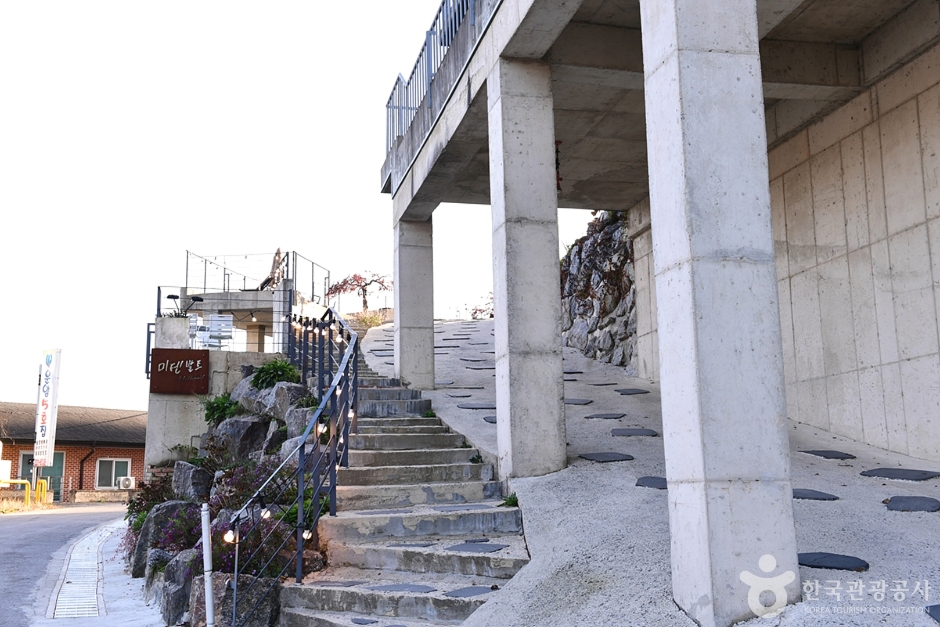
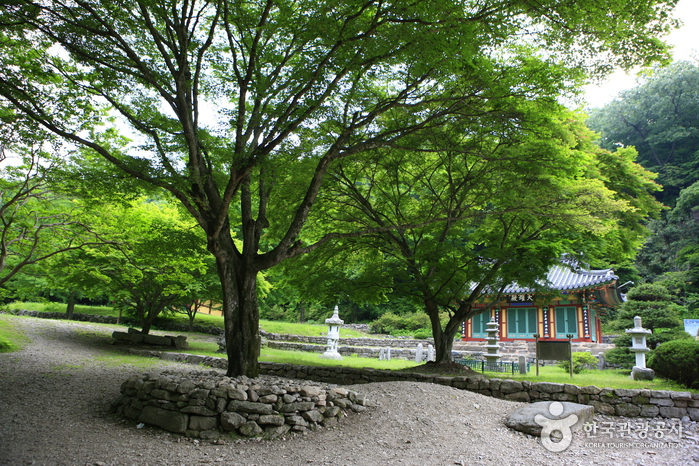
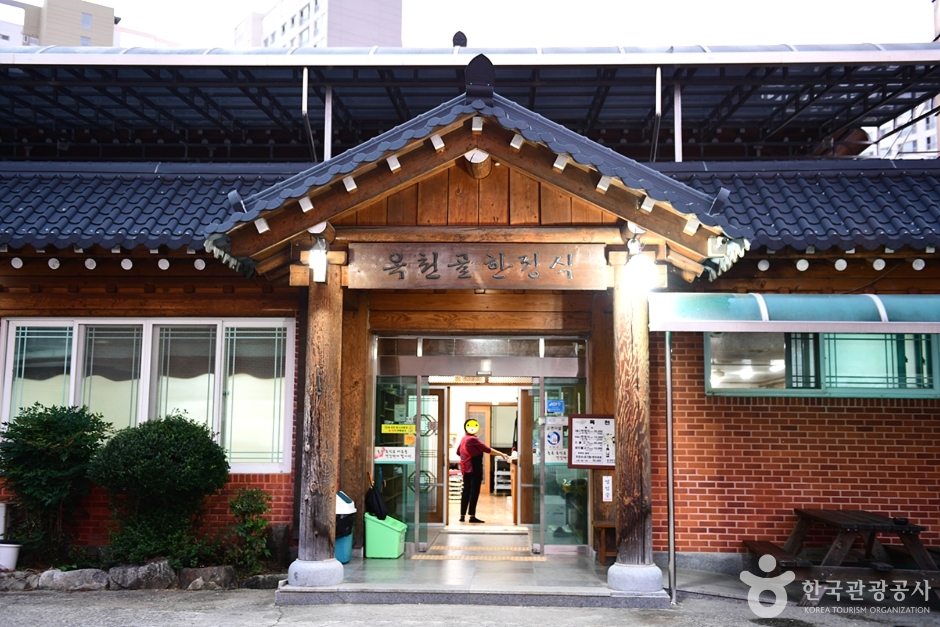

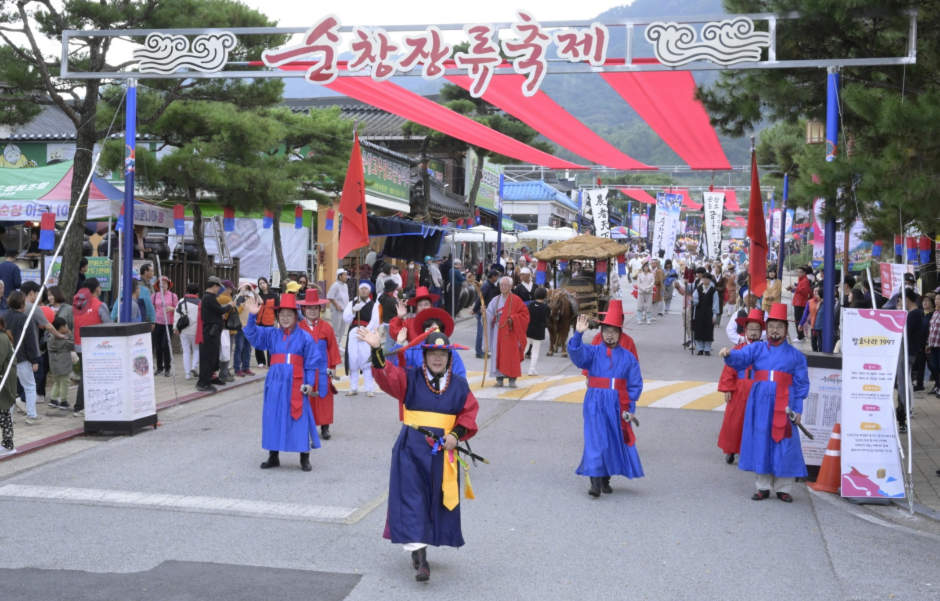
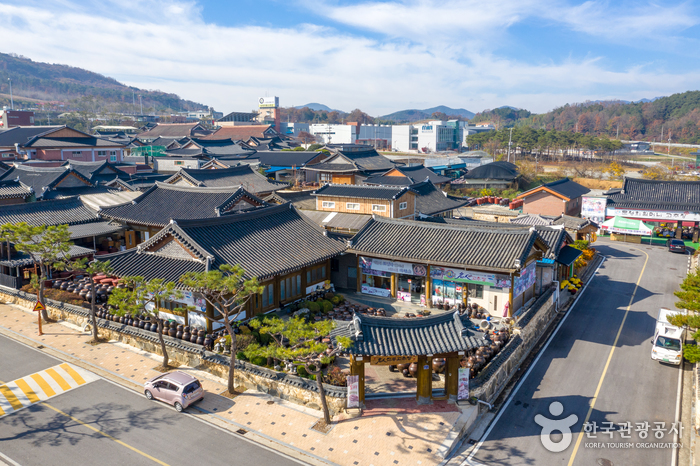
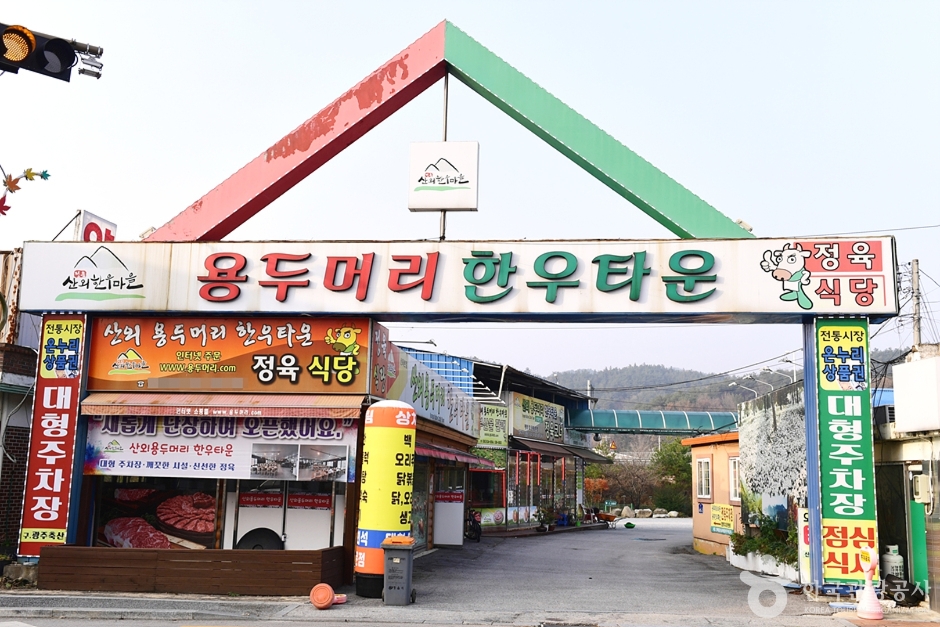
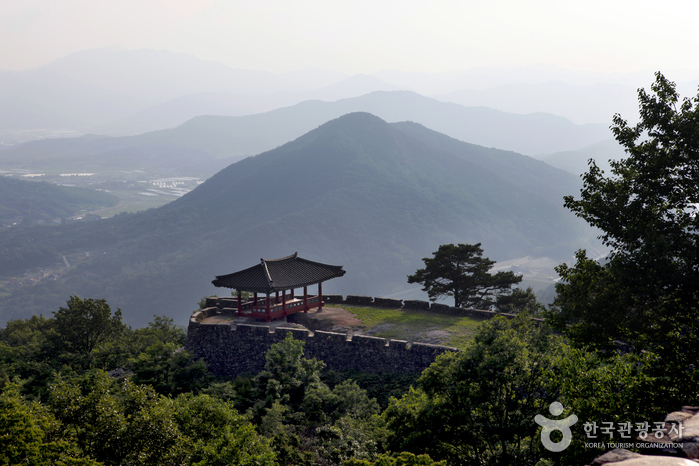
 English
English
 한국어
한국어 日本語
日本語 中文(简体)
中文(简体) Deutsch
Deutsch Français
Français Español
Español Русский
Русский